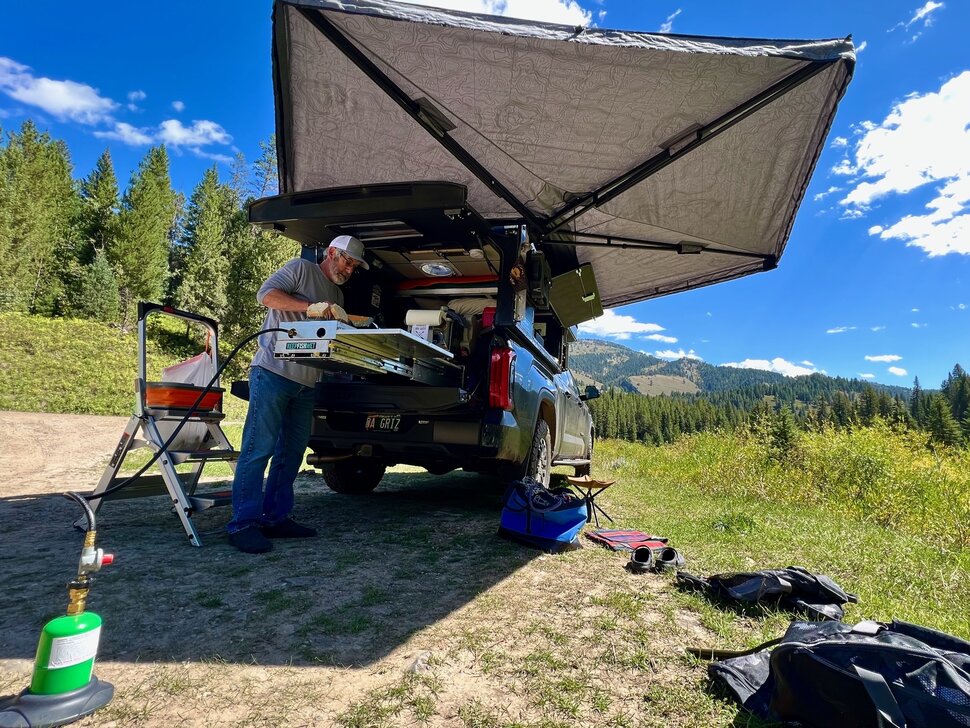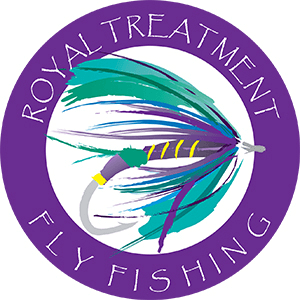Adventure Vehicle Update

One year ago this past week, we took delivery of our new Flyfishing Adventure Vehicle, Griz, a 2023 Toyota Tundra, and then the real adventure started. My former trusty steed, a Toyota 4Runner, had taken over seven years to bring it to a level of competence and self-sufficiency that allowed me to navigate the back roads and dusty trails comfortably in search of angling opportunities. I knew that this time, I'd need to cut the development time considerably if I wanted to enjoy the adventures we had already marked on the calendar.
I took a leap of faith and ordered the Four Wheel Camper Project M even before the truck arrived at the dealership, and then laid out a list of "improvements" I thought would be needed based on my experience with the 4Runner. I researched auxiliary power units, storage options, lighting, heaters, mattresses, awnings, and almost anything one would need if spending 2 to 3 weeks on a vehicle-based adventure. I also studied how others had "improved" their Project M campers, spotting a few "dos" and some definite "do nots."
While I understand the concept of a "camper," when I'm off the beaten path, I simply want a comfortable place to sleep and a safe place to haul and store my gear. Of course, there are some creature comforts that, if they fit, why not?
Once the Tundra was in the driveway, the vision started to materialize. I dropped Griz off at Wanderlust Overland for a Prinsu roof rack, CBI skid plate, running boards, and auxiliary lighting upgrades and to have the Goal Zero Yeti 1500 wired to the charging system. The Goal Zero unit would run the lights and fans in the camper, plus power the Engel refrigerator I was able to salvage from the wrecked 4Runner. I also added a fuse block to handle any other power needs. Having the fuse block mounted when it came time to have the Project M installed made wiring the camper to the power source easier.
The Prinsu Roof Rack and CBI Skid Plates may seem like an unnecessary expense, but I would argue differently. The roof rack provides an air deflector to improve the aerodynamics of the camper, while the skid plates protect the transfer case from damage and the catalytic converters from theft. The rack also provides a mounting place for my auxiliary lighting and storage for traction boards. These items needed to be installed before the camper arrived, as installation afterward would be impossible or at least inconvenient.
The Project M was scheduled to arrive in May, so I took the opportunity to schedule a week-long fishing trip into Eastern Oregon for the middle of June. Unfortunately, the camper didn't arrive until 3 days before our departure. I worked feverishly to have all the pieces in place and pre-fitted to simplify the final installation. We left on schedule and lacked for nothing on our first shake-down outing. Still, I was making notes and planning improvements.
The first item to address was the suspension. While the Project M is relatively light, my custom slide-out kitchen, salvaged from the 4Runner and our other gear, made the TRD springs sag under the load. An upgrade to the rear springs and swaybar was needed. I texted Micheal at Wanderlust Overland on the drive home and planned a visit the following week.
Having done my research and having a relatively knowledgeable understanding of suspension from my racing days, I settled on Dobinson Springs as a starting point, as they offered several options for the new Tundra. Wanting to "kick the can" of new shocks down the road a bit, we opted to upgrade the rear springs, sway bar, and bump stops before addressing shocks. These improvements helped keep the tail from dragging, but the truck was not the most "responsive" when fully loaded. One long road trip to Yellowstone and back had me back at Wanderlust, planning a shock package. We settled on the Dobinson MRR 3-way Adjustable shocks front and rear, with updated coils for the front end. After some "tuning," I am able to drive the truck now, not ride it. The ability to adjust the suspension for load and use is a plus.
Addressing the camping part of the rig has been fun. I added a roof rack on the camper to hold our River Quiver and a 100-watt solar panel, adding to the power supply and rod-carrying capacity. I also bolted on a 270 awning, the "Major Shady" from Yakima, and a shower stall from Joolca. Then, a diesel heater to make colder nights more comfortable. Like I said earlier, why not?
So, with the truck working as it should and the camper equipped for adventure, the only thing to do now is put some miles on it. That is the fun part. We'll see you on the road!




